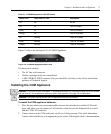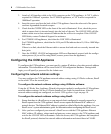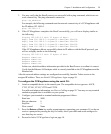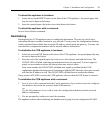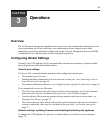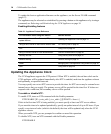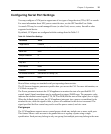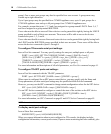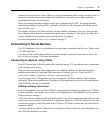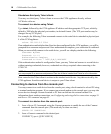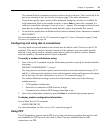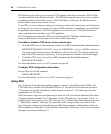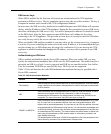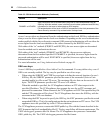
Chapter 3: Operations 15
Configuring Serial Port Settings
You may configure a CCM port to support one of two types of target devices (TDs): SPC or console.
For more information about SPC power control devices, see the SPC Installer/User Guide.
A console TD may be a serial-managed Linux (or other Unix) server, router, firewall or other
supported serial device.
By default, CCM ports are configured with the settings listed in Table 3.2.
Most of these settings are standard serial port operating characteristics.
The CLI access character parameter specifies how you access the CLI. For more information, see
CLI Mode on page 26.
The Power parameter instructs the CCM appliance to monitor the state of a specified RS-232
control signal. Signal transitions may be configured to trigger SNMP traps. The parameter value
indicates an inbound control signal (CTS, DCD or DSR) and the state of that signal (low or high).
When the defined signal is true, the CCM appliance interprets it as a power on condition for the
attached device; when the signal is false, a power off condition for the device is assumed. The
signal specified for flow control may not be used for power control, and vice versa.
Port groups
The CCM appliance supports access control groups which may include one or more serial ports.
This feature allows a user account to be granted access to a group of ports using a single
specification. Each port may belong to only one group (but multiple ports may belong to the same
Table 3.2: Default Port Settings
Parameter Value
Target device Console
Name xx-xx-xx Pn (last 3 octets of MAC address plus the port number)
Baud rate 9600
Bits per character 8
Parity None
Stop bits 1
Flow control None
Time-out 15 minutes
CLI access character Use Server CLI setting (^D)
Power None



